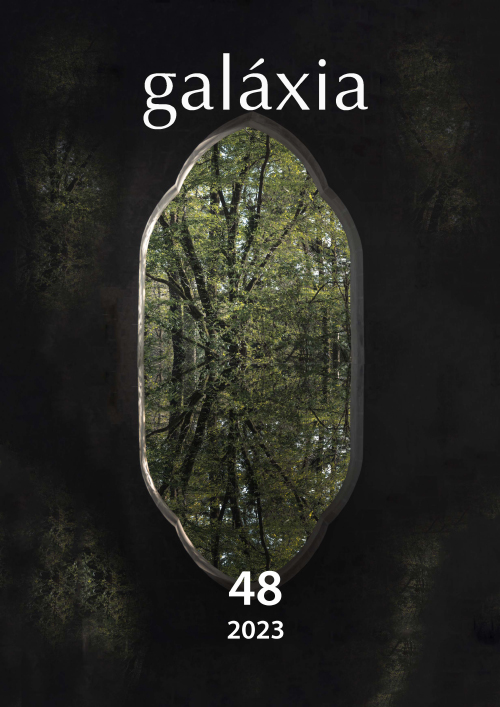Weary and exhausted:
precarious workers in Brazilian fiction cinema
Keywords:
Weariness, body, worker, recent Brazilian fictional filmsAbstract
The article identifies figures of weariness and its paroxysmal stage, exhaustion, in recent Brazilian fiction film on precarious workers. It is argued that such bodily states, through the filmic form, materially announce the mechanisms of power inflicted on workers. In order to reveal the nexus between body and social experience, the article elaborates an introductory conceptual framework able to analyze fatigue as an aesthetic-political category whose predicates comprise an ongoing action, an idea of duration, and a way of endure what affects the subject. In the light of this reference and the analysis of films by Marcela and Henrique Borela, Eryk Rocha, Affonso Uchôa and João Dumans, the figures of worker weariness are discussed from the residual instant of the posture, from spatial-visual compression devices and of serialization practices.
References
ANTUNES, R. O caracol e sua concha: ensaios sobre a nova morfologia do trabalho. São
Paulo: Boitempo, 2005.
______. Os sentidos do trabalho: ensaio sobre a afirmação e a negação do trabalho. 2.
ed. São Paulo: Boitempo, 2009.
______; PRAUN, L. A sociedade dos adoecimentos no trabalho. Serviço Social & Sociedade,
São Paulo, n. 123, p. 407-427, jul./set, 2015.
BARTHES, R. Le neutre. Notes de cours au Collège de France 1977-1978. Paris: Seuil, 2002.
______. O neutro. Trad. Ivone Castilho Benedetti. São Paulo: Martins Fontes, 2003.
BAZIN, A. O que é o cinema? Trad. Eloisa Araújo Ribeiro. São Paulo: Cosac Naify, 2014.
BERNARDET, J. C. Cineastas e imagens do povo. São Paulo: Companhia das Letras, 2003.
BLÜMLINGER, C.; LAVIN, M. In: ______ (dir.). Introduction. Geste filmé, gestes filmiques.
Paris: Éditions Mimésis, 2018.
BORELA, M.; BORELA, H. Mascarados: Entrevista a Renato Silveira e Kel Gomes. Cinematório,
Disponível em: . Acesso em: 22 jul. 2022.
BRANDELLERO, S. Mobilidade noturna no cinema brasileiro contemporâneo: espectralidades
na cidade 24-horas, Revista Visuais, v. 7, n. 13, p. 92-107, 2021.
CARDENUTO, R. O cinema político de Leon Hirszman (1976-1981): engajamento e resistência
durante o regime militar brasileiro. Tese (Doutorado) – Programa de Pós-graduação
em Meios e Processo Audiovisuais, Universidade de São Paulo, São Paulo, 2014.
COMOLLI, J. L. Corps mécaniques de plus en plus célestes. Images Documentaires, n.
, p. 39-48, 1996.
DE LUCA, T.; BARRADAS JORGE, N. Slow Cinema. From Slow Cinema to Slow Cinemas. In:
______ (org.). Slow cinema. Edimburgo: University Press, 2016. p. 1-21.
DELEUZE, G. Cinema 2 – A imagem-tempo. Trad. Eloisa Araújo Ribeiro. São Paulo: Editora
, 2018.
______. L’Épuisé. In: BECKETT, S. Quad et autres pièces pour la télévision, de Samuel
Beckett. Paris: Lés Editions de Minuit, 1992.
FLANAGAN, M. Towards an Aesthetic of Slow in Contemporary Cinema, 16:9, v. 6, n. 29,
Disponível em: <http://www.16-9.dk/2008-11/side11_inenglish.htm>. Acesso em:
mar. 2021.
GORFINKEL, E. Weariness, Waiting: Enduration and art Cinema's Tired Bodies. Discourse,
v. 34, n. 2-3, p. 311-347, primavera/outono, 2012.
GUIMARÃES, C. Desolação capitalista e resistência subjetiva em Arábia, de Affonso Uchôa
e João Dumans. Catálogo Forumdoc.Bh.2017. Belo Horizonte: Associação Filmes de
Quintal, 2017. p. 243-249.
KREIN, J. D. O desmonte dos direitos, as novas configurações do trabalho e o esvaziamento
da ação coletiva. Consequências da reforma trabalhista. Tempo social, v. 30, n. 1, 2018.
LEVINAS, E. De l'Existence à l'Existant. 2. ed. Paris: J.VRIN, 1993.
LLEWELYN, J. Emmanuel Levinas: The genealogy of ethics. Londres: Routledge, 1995.
SOUTO, M. Infiltrados e invasores: uma perspectiva comparada sobre relações de classe
no cinema brasileiro. Salvador: EDUFBA, 2019.
SUPPIA, A. Labirintos do trabalho no cinema brasileiro. Significação, v. 41, n. 41, p.
-197, 2014.
XAVIER, I. Sertão mar. São Paulo: Cosac Naify, 2007.
Downloads
Published
How to Cite
Issue
Section
License
Copyright (c) 2023 Galaxia

This work is licensed under a Creative Commons Attribution 4.0 International License.
I cede the copyrights to publication of my article to Galaxia journal and will consult the journal’s scientific editor should I decide to republish it later in a book.



 Este obra está licenciada com uma Licença
Este obra está licenciada com uma Licença 